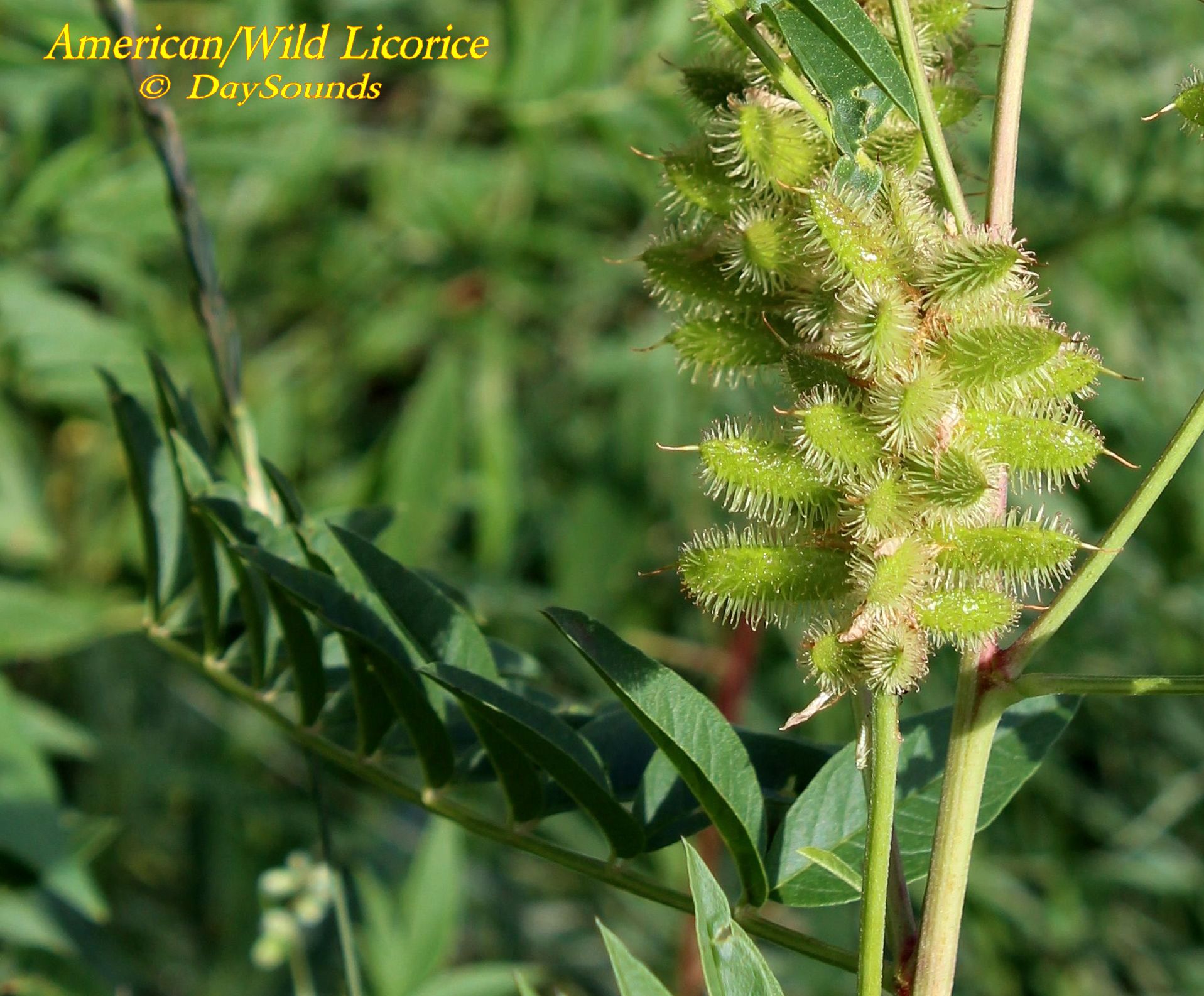by DaySounds © 2013-16

American licorice/Wild licorice (Glycyrrhiza lepidota)
A tea can be made and used with this plant to fight diarrhea, minor stomach
problems, coughs, fever, and sore throats. The roots can be chewed to keep
mouth & lips moist. Toothaches can become less intense, but not disappear,
by chewing the roots and held the fibers in the mouth for a few minutes.
Leaf poultices help to improve sores and earaches; they mildly reduce swelling
and irritation as well.
Do not confuse this plant with Common Cocklebur (Xanthium strumarium).
Common cocklebur is mildly toxic. The leaves are the fastest and easiest way
to differentiate them: wild licorice has pinnately compound leaves and narrow/
lanceolate leaflets; common cocklebur's are alternate and broad. In blooming
season, you can also take a look at the flowers: Wild licorice flowers are white/
pale yellow and typical of the pea family (fabaceae) to which they belong;
common cocklebur belongs to the asteraceae family; therefore, the flowers are
quite different as well, with colors going from green to pale yellow (male), and
green to brown/red (female).
©DaySounds
PO Box 746497
Arvada, CO 80006
USA